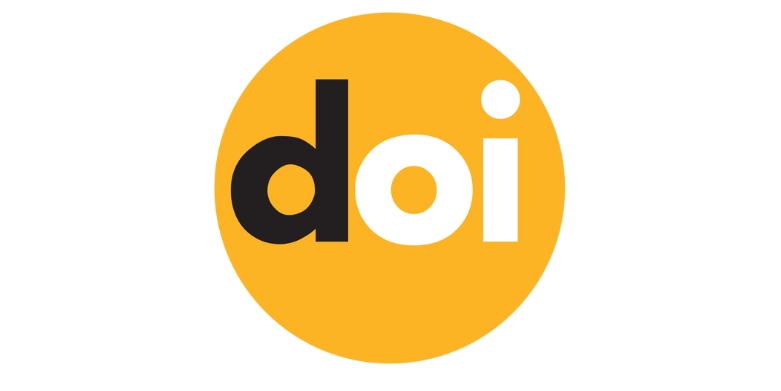Supply Chain Transparency, Reputational Risk, and Costs: A Focus on Customers in Saudi Arabia
DOI:
https://doi.org/10.63053/ijmea.52Keywords:
supply chain transparency; reputational risk; costs; Saudi Arabia; management; customersAbstract
This study investigated how supply chain transparency affects company reputation and operational costs. The study assumed that stakeholders favour companies that disclose information about their supply chain operations, given the growing interest in supply chain transparency. Companies that practice such transparency build stakeholder trust and loyalty, thereby reducing business risks while benefiting from sustained customer relationships. However, transparency also carries risks, including potential patent and copyright infringement. Using a qualitative approach, the study conducted in-depth interviews with eighteen supply chain professionals across logistics, planning, customer service, technology management, inventory, and warehouse operations. Data analysis revealed that supply chain transparency is crucial for mitigating reputational risks and reducing operational costs, as stakeholders preferentially collaborate with trustworthy, reliable, and efficient companies. These findings have practical implications for organizations seeking to enhance collaboration, build stakeholder loyalty, and reduce costs associated with poor market perception.
References
Andiyappillai, N. (2021). An Analysis of the Impact of Automation on Supply Chain Performance in Logistics Companies. IOP Conference Series: Materials Science and Engineering, 1055(1), 012055. Researchgate. https://doi.org/10.1088/1757-899x/1055/1/012055
Azmi, N. A., Sweis, G., Sweis, R., & Sammour, F. (2022). Exploring Implementation of Blockchain for the Supply Chain Resilience and Sustainability of the Construction Industry in Saudi Arabia. Sustainability, 14(11), 6427. https://doi.org/10.3390/su14116427
Bateman, A., & Bonanni, L. (2019, August 20). What Supply Chain Transparency Means. Harvard Business Review. https://hbr.org/2019/08/what-supply-chain-transparency-really-means
Buck, L. (2022). Understanding Transparency in Supply Chains (pp. 1–38) [Bachelor’s Thesis]. https://trace.tennessee.edu/cgi/viewcontent.cgi?params=/context/utk_haslamschol/article/1024/&path_info=Understanding_Transparency_in_Supply_Chains_May_2022_LB_final_edits.pdf
Budler, M., Quiroga, B. F., & Trkman, P. (2023). A review of supply chain transparency research: Antecedents, technologies, types, and outcomes. Journal of Business Logistics, 45(1). https://doi.org/10.1111/jbl.12368
Chopra, C., & Gupta, S. (2020). Impact of Social Media on Consumer Behavior. International Journal of Creative Research Thoughts (IJCRT), 8(6), 1943–1961. https://doi.org/10.13140/RG.2.2.26927.15527
Ebinger, F., & Omondi, B. (2020). Leveraging Digital Approaches for Transparency in Sustainable Supply Chains: A Conceptual Paper. Sustainability, 12(15), 6129.
Egels-Zandén, N., Hulthen, K., & Wulff, G. (2015). Trade-offs in supply chain transparency: the case of Nudie Jeans Co. Journal of Cleaner Production, 107(16), 95-104. https://doi.org/10.1016/j.jclepro.2014.04.074
Fraser, E., & van der Ven, H. (2022). Increasing Transparency in Global Supply Chains: the Case of the Fast Fashion Industry. Sustainability, 14(18), 11520. mdpi. https://doi.org/10.3390/su141811520
Gardner, T. A., Benzie, M., Börner, J., Dawkins, E., Fick, S., Garrett, R., Godar, J., Grimard, A., Lake, S., Larsen, R. K., Mardas, N., McDermott, C. L., Meyfroidt, P., Osbeck, M., Persson, M., Sembres, T., Suavet, C., Strassburg, B., Trevisan, A., & West, C. (2019). Transparency and sustainability in global commodity supply chains. World Development, 121(1), 163–177. ScienceDirect. https://doi.org/10.1016/j.worlddev.2018.05.025
Gupta, M., Shaheen, M., & Reddy, P. (2019). Qualitative techniques for workplace data analysis. IGI Global, Business Science Reference.
He, J., Fan, M., & Fan, Y. (2024). Digital transformation and supply chain efficiency improvement: An empirical study from a-share listed companies in China. PloS One, 19(4), e0302133–e0302133. https://doi.org/10.1371/journal.pone.0302133
Hejazi, M., & Habani, M. A. (2024). Impact of green supply chain integration management on business performance: a mediating role of supply chain resilience and innovation the case of Saudi Arabian manufacturing sector. Cogent Business & Management, 11(1). https://doi.org/10.1080/23311975.2024.2392256
Jia, F., Seuring, S., Chen, L., & Arash Azadegan. (2024). Guest editorial: Supply chain transparency: opportunities, challenges, and risks. International Journal of Operations & Production Management, 44(9), 1525–1538. https://doi.org/10.1108/ijopm-09-2024-992
Linich, D. (2014). The path to supply chain transparency A practical guide to defining, understanding, and building supply chain transparency in a global economy. https://www2.deloitte.com/content/dam/insights/us/articles/supply-chain-transparency/DUP785_ThePathtoSupplyChainTransparency.pdf
Mollenkopf, D. A., Peinkofer, S. T., & Chu, Y. J. (2022). Supply chain transparency: Consumer reactions to incongruent signals. Journal of Operations Management, 68(4). https://doi.org/10.1002/joom.1180
Montecchi, M., Plangger, K., & West, D. C. (2021). Supply chain transparency: A bibliometric review and research agenda. International Journal of Production Economics, 238(3), 108152. https://doi.org/10.1016/j.ijpe.2021.108152
Schäfer, N. (2022). Making transparency transparent: a systematic literature review to define and frame supply chain transparency in the context of sustainability. Management Review Quarterly, 1-14. https://doi.org/10.1007/s11301-021-00252-7
Weller, F. (2024). Blockchain Technology for Secure and Transparent Supply Chain Management. International Journal of Computing and Engineering, 6(3), 15–28.
Xie, P., Zhang, Y., Chen, R., Lin, Z., & Lu, N. (2024). Social media’s impact on environmental awareness: a marginal treatment effect analysis of WeChat usage in China. BMC Public Health, 24(1). https://doi.org/10.1186/s12889-024-20721-4
Zelbst, P. J., Green, K. W., Sower, V. E., & Bond, P. L. (2019). The impact of RFID, IIoT, and Blockchain technologies on supply chain transparency. Journal of Manufacturing Technology Management, 31(3), 441–457. https://doi.org/10.1108/jmtm-03-2019-0118
Downloads
Published
How to Cite
Issue
Section
License
Copyright (c) 2025 Authors

This work is licensed under a Creative Commons Attribution 4.0 International License.








